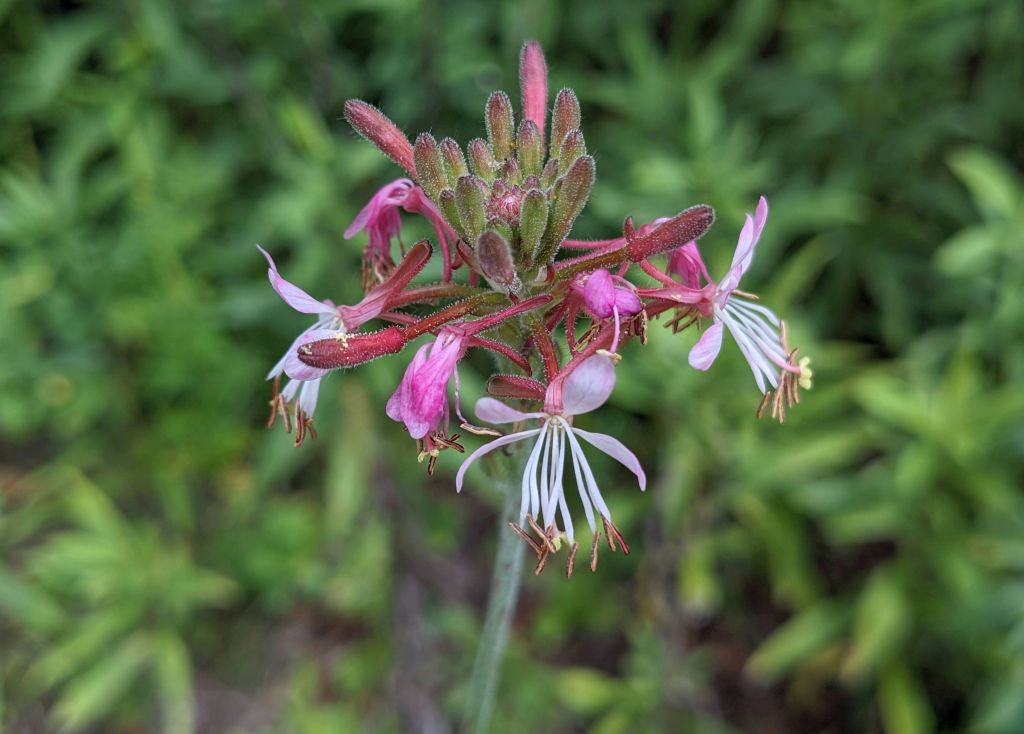
21 August 2024
When I took this photo at Hays Woods yesterday, I knew the plant’s name — biennial gaura — but just for fun I asked PictureThis to identify it. It said “Biennial Gaura, a species of Evening Primrose.” Evening Primrose was a surprise. I didn’t think they were related.
Common evening primrose (Oenothera biennis) has four evenly spaced petals with stamens and pistil in the middle. Though the flower appears to be open here, it actually opens more widely in the evening.
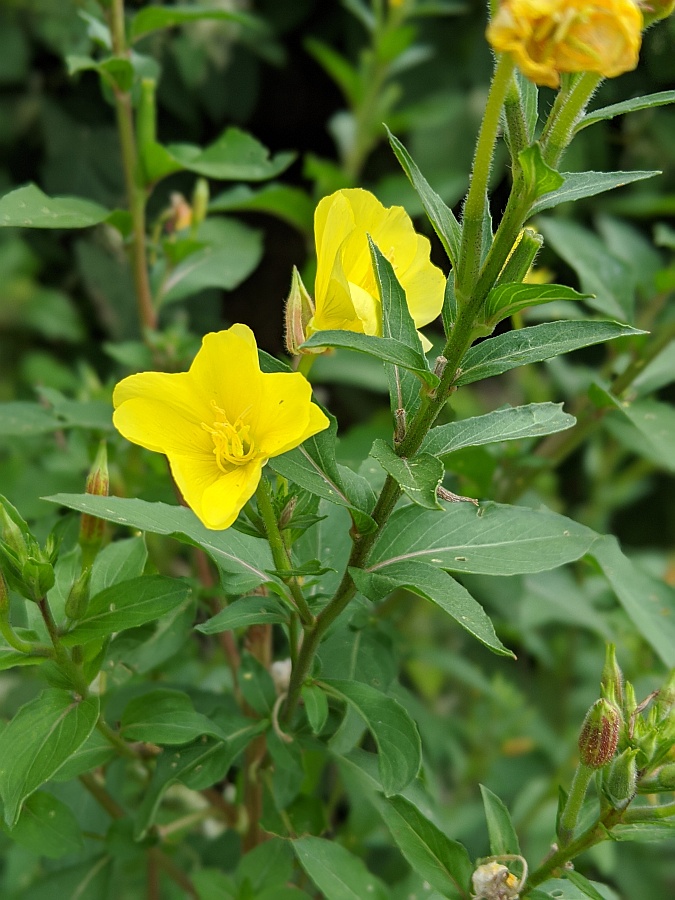
Biennial gaura (Oenothera gaura) also has four petals but they are all on one side of the stem with stamens and pistil drooping below. The shape of the flower looks “irregular” to me and “evening” doesn’t seem to apply either. The flower looks like it stays open all day.
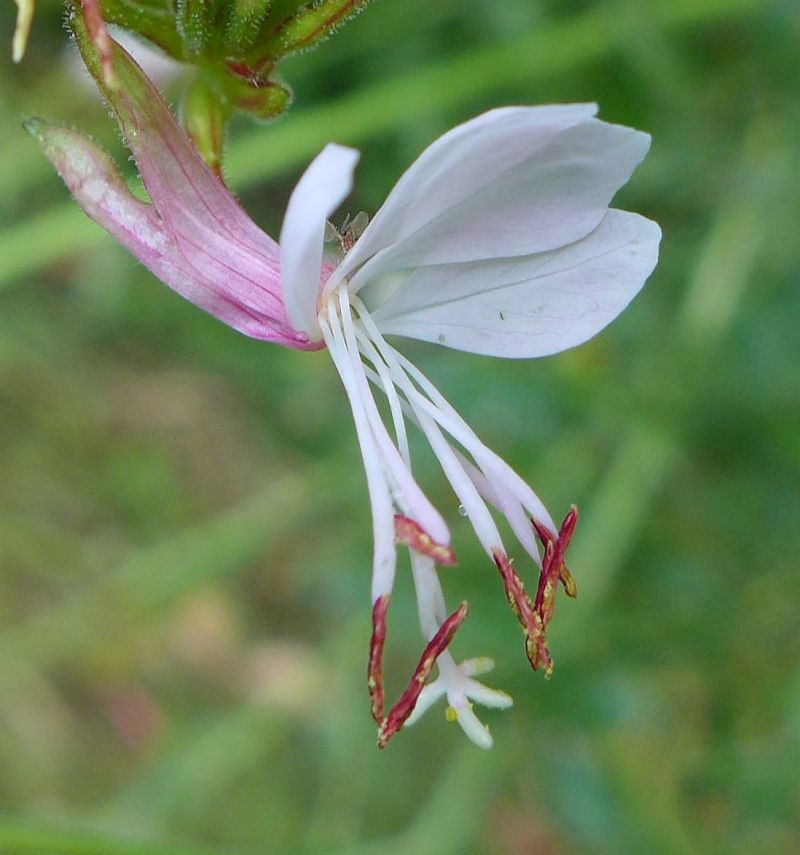
However, studies of the former genus Gaura caused all of it to be absorbed into Oenothera (Evening Primrose ) in 2007. The reason I was surprised 17 years later is that my hardback copy of Newcomb’s Wildflower Guide was published in 1997. I should rely more on apps these days.
Here are additional photos of both flowers for further comparison.
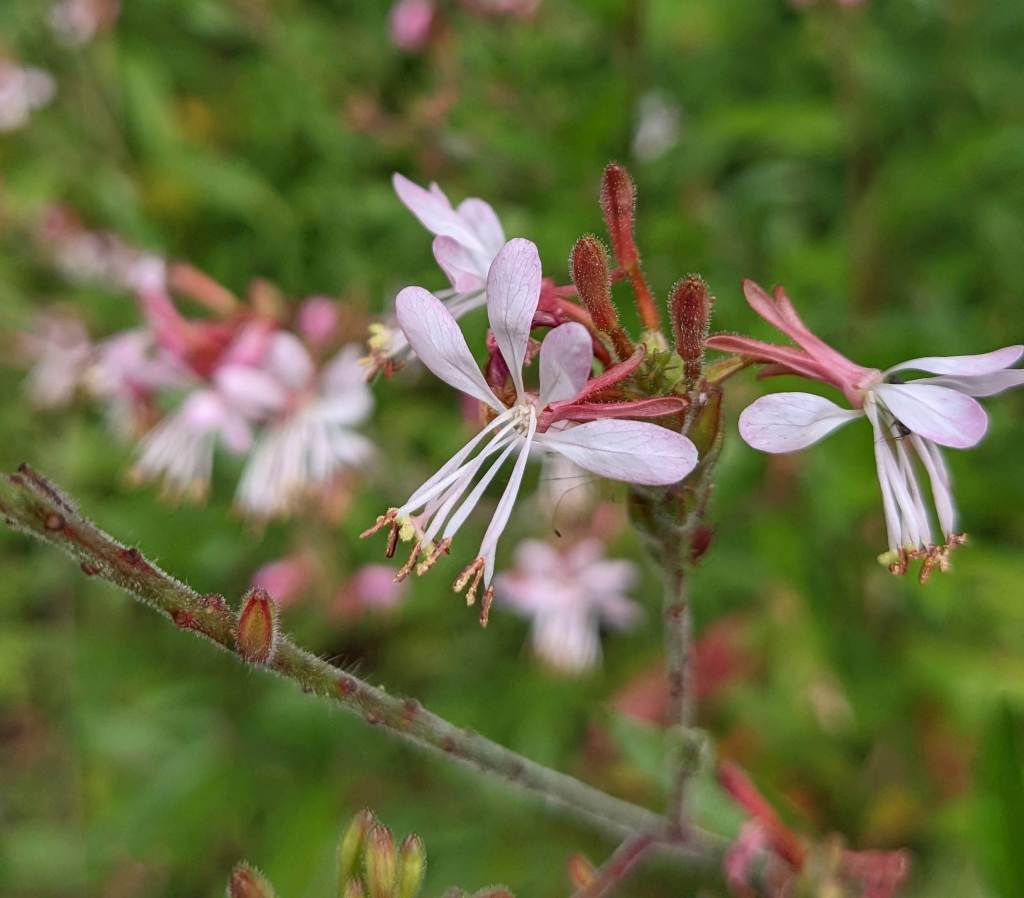
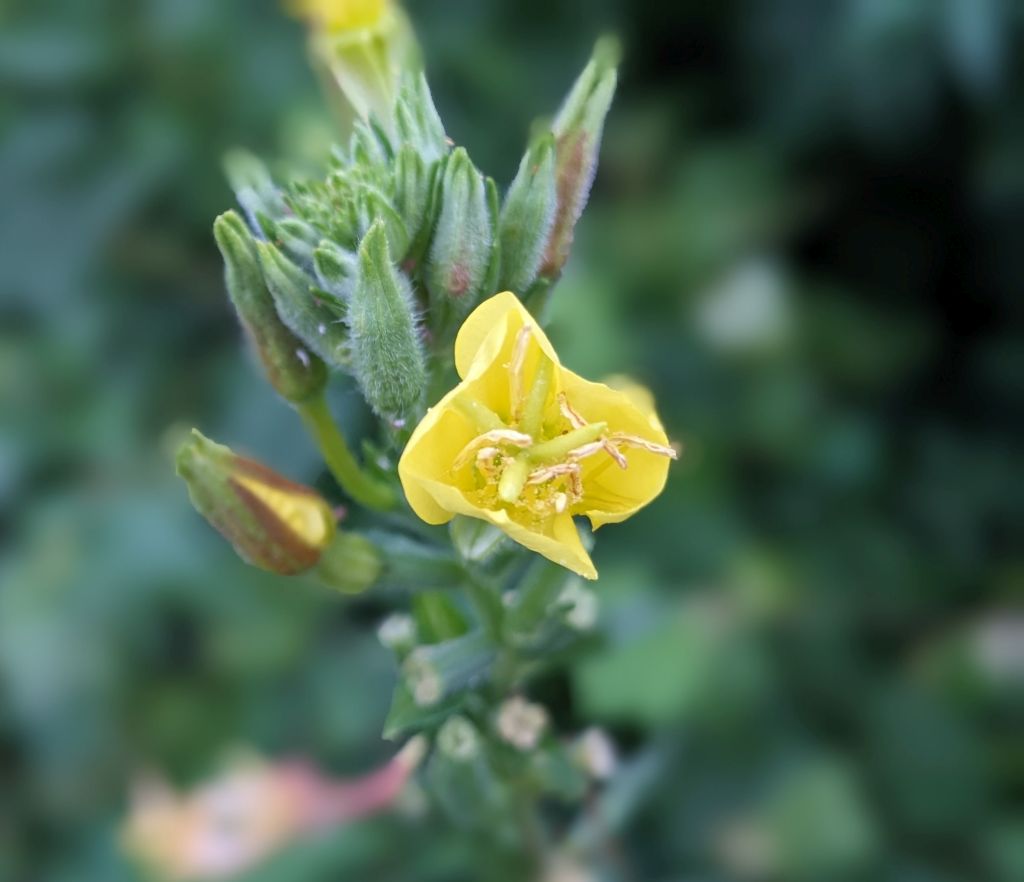
Both plants are “weedy” species so they’re pretty easy to find in the field. Look for common evening primrose in sunny or mostly sunny places, often along trails. Biennial gaura wants full sun and dry, rocky soil. At Hays Woods it grows at the powerline cut.
Note that biennial gaura flowers are much smaller than evening primrose. Tiny but beautiful.
I have numerous patches of Evening Primrose in my yard which I first introduced many years ago from a packet of mixed wildflower seeds. Each dried seed pod has an abundance of seeds that end up spreading everywhere. The flowers are open all night and have a strong lemon smell which Sphinx moths seem to love. I like going out at night and looking for the moths. Goldfinch like the dried seed pods too.